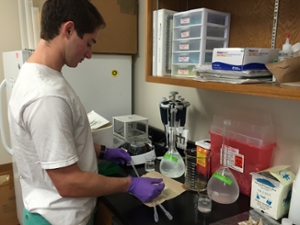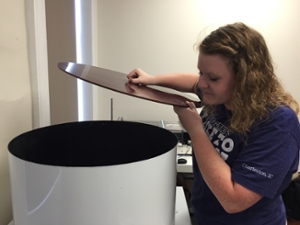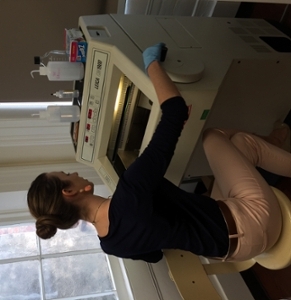Behavioral Neuroscience

I am a Comparative Psychologist with primary interest in brain/behavior relationships. As a Comparative Psychologist I am most interested in characterizing behavior in terms of adaptive significance and structure in terms phylogeny. I have worked with many species ranging from salamanders, ferrets, prosimian and anthropoid primates including humans. My present area of research involves delineating ontogenetic changes in the salamander brain as it faces metamorphic change in body structure (gills to lungs), behavior (swimming to crawling), and environment (pond to land). Undergraduate students who work in my lab receive training in behavioral observation, histology, microscopy, and anatomic quantification and comparison within and between species.
Recent Publications:
Milliken, G.W., E.J. Plautz & R.J. Nudo (2013). Distal forelimb representations in primary motor cortex are redistributed after forelimb restriction: a longitudinal study in adult squirrel monkeys. Journal of Neurophysiology, 109 (5), 1268-1282.
Dr. Garrett Milliken's ResearchGate page.

I am a behavioral neuroendocrinologist interested in the neuroendocrine mechanisms associated with affiliative behaviors. I am interested in the degree to which certain social circumstances (living in isolation, with related individuals or with strangers) can be stressful or beneficial relative to the social or mating systems (monogamy vs. polygyny) of different species. I quantify a variety of different neuroendocrine mechanisms, including hormone receptors, neuropeptiderigic activity and neurogenesis. My research program regularly incorporates undergraduates through independent studies and bachelor's essays. See updates on some former research students from my lab by linking here and here.
Recent Publications:
Ruscio, M.G., King, S.B., Kinley-Cooper, S.K., McKendrick, G. (2018). Social environment affects central distribution of estrogen receptor alpha in Peromyscus californicus. General and Comparative Endocrinology. 269. 81-87. pdf.
Ruscio, M.G., King, S.B., Haun, H.L. (2015). Social isolation increases cell proliferation in male and cell survival in female California mice (Peromyscus californicus). Physiology and Behavior. 151. 570-576. pdf.
Ruscio, M.G., Korey, C., Birck, A. (2015). Neuroscience and global learning. Journal of Undergraduate Neuroscience Education. 11 (1), A106-A111. pdf
I am a neuroscientist interested in the recovery of function after peripheral nerve injury. I am particularly interested in how exercise modulates the expression of neurotrophins in a sex dependent manner. My studies explore the contributions that sex hormones make in the regeneration process and how those hormones interact with neurotrophins to guide axon regeneration after nerve injury. The results of these studies directly translate into improved treatments for the thousands of people that experience traumatic nerve injuries each year.
Recent Publications:
Please view Dr. Wilhelm's ResearchGate Page for recent publications










